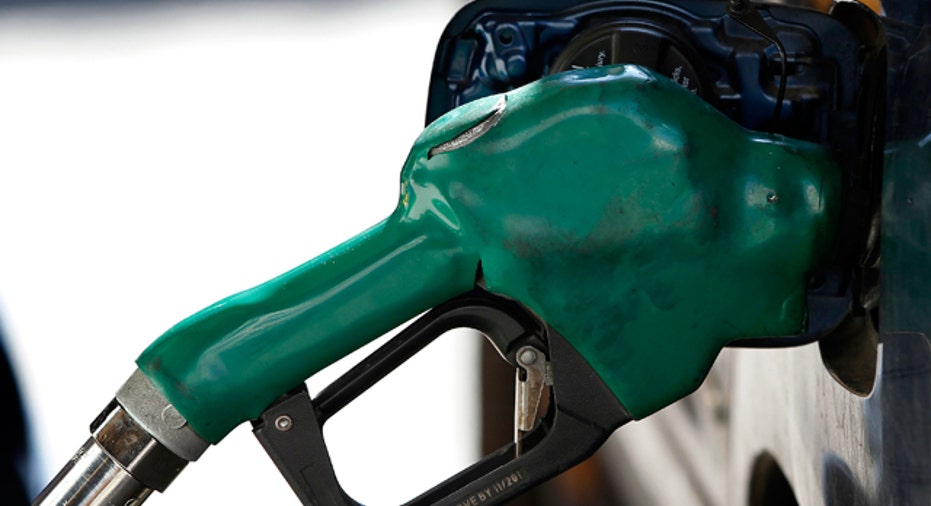Five Steps to Counter $4 per Gallon at the Pump

How consumers can reduce gas costs
With gas prices hovering around the $4 per gallon mark, many consumers are finding their budgets stretched thin.
"Some people have no idea how much they're spending on gas because they're so disgusted by an increasing expense that they have no control over," says Dorothy Barrick, group manager and financial counselor for Farmington Hills, Mich.-based credit counseling organization GreenPath Debt Solutions.
While you can't control what your local gas station charges, here are five steps you can take to save on gas and reduce the amount you spend to fill up at the pump.
Take out your owner's manual
A lack of familiarity with your car's owner's manual could be costing you money. It tells you what octane level of gasoline to use, the type of oil that's most efficient and your car's optimal tire pressure.
Very few auto manufacturers recommend premium fuel. "If you put that in, you're unnecessarily spending money," says John Nielsen, AAA's director of Automotive Engineering and Repair.
Proper maintenance, such as regular oil changes and air filter replacements, also can save on gas. In fact, you can increase your gas mileage by about 4% if you keep your engine tuned to your owner's manual's specifications, according to the Federal Trade Commission.
However, too much maintenance can negate your gas savings. While some people change their oil every 3,000 miles, their owner's manuals may recommend doing so after 7,500 miles, Nielsen says.
In addition, properly inflated and aligned tires also can lead to savings on gas, potentially adding 3% to gas mileage, the FTC says. Check your tire pressure monthly, says Brandy Schaffels, senior editor at TrueCar.com. And you don't have to get your hands dirty in the process since most tire centers will check it for free, Schaffels adds.
Remove junk from the trunk
One of the easiest ways to save on gas is to get the junk out of the trunk. Take a few minutes to determine what you need to carry around and chuck the rest. The lighter your car, the less work your engine has to do, Schaffels says. The FTC estimates that an additional 100 pounds in the trunk can decrease fuel economy by up to 2%.
Avoid using your trunk as a storage unit. "Don't leave golf clubs in there all week if you only play on weekends," says Ronnie Kweller, spokeswoman for the Alliance to Save Energy in Washington, D.C. Likewise, a change in seasons could be a natural time to clean house. For example, shovels or bags of salt that you hauled around in the winter should be moved to your garage now that spring is here.
Adjust your driving habits
We live in a fast-moving society, but you should "plan to spend a little bit longer getting to where you need to go because aggressive driving is a tremendous fuel burner," TrueCar's Schaffels says. Avoid quick starts and stops. Coasting to a stop is more cost-effective than waiting until you get up to a red light to slam on the brakes. You can improve your fuel economy around town by up to 5% by driving more gently, the FTC says.
Plan your trips, so you can string multiple stops together and avoid driving during rush hour, Nielsen says. Also, it's more cost-effective to turn your car off and on than to idle for a long time, so if you're waiting at a drive-through, consider turning the ignition off. Warming a car for an extensive period of time is also unnecessary. If you're spending more than 30 seconds warming your car, you're wasting money, Nielsen says.
And when you drive faster than 60 miles per hour, your gas mileage decreases. "Every five miles over 60 mph is like paying another 20 cents per gallon for gas," Kweller says.
Take advantage of gasoline apps
Thanks to technology, it's easier than ever to pay less at the pump. A number of smartphone apps can show you maps of gas stations in your area and let you sort by price and location. Among those recommended by Schaffels are the free GasBuddy, the free AAA TripTik Mobile and the $2.99 Fuel Finder.
However, price isn't the only thing you should consider when using these apps.
"Costco gas might be 10 cents or 15 cents cheaper, but if you're going to wait in line a half hour to pay that, what's the value of your time versus what you're going to save?" Schaffels asks.
The same applies if the station with the lowest-priced gas is miles away. "It might be worth paying a couple pennies more per gallon for the gas station that's around the corner as opposed to driving a couple of miles to save," Schaffels says.
Cash in on rewards and loyalty programs
Some credit cards offer cash back on gas purchases. Likewise, some retailers reward spending with discounts at affiliated gas stations. These offerings can potentially save you money as long as you recognize they're not always the ideal choice.
Many gas stations offer a lower price per gallon if you pay in cash so compare the rewards or loyalty discount to the cash option to see which is a better deal.
In the case of loyalty programs, make sure the gas station that's offering the program is close enough to justify the savings. When it comes to credit card rewards, keep your card in your pocket, and use cash if you carry a balance on the card, GreenPath's Barrick says. If you're paying interest on the card, that's just adding to your gas budget, Barrick says.
Anyone can cut their spending on gas with a little forethought and planning. "Very small incremental items add up to make a larger difference," Schaffels says.